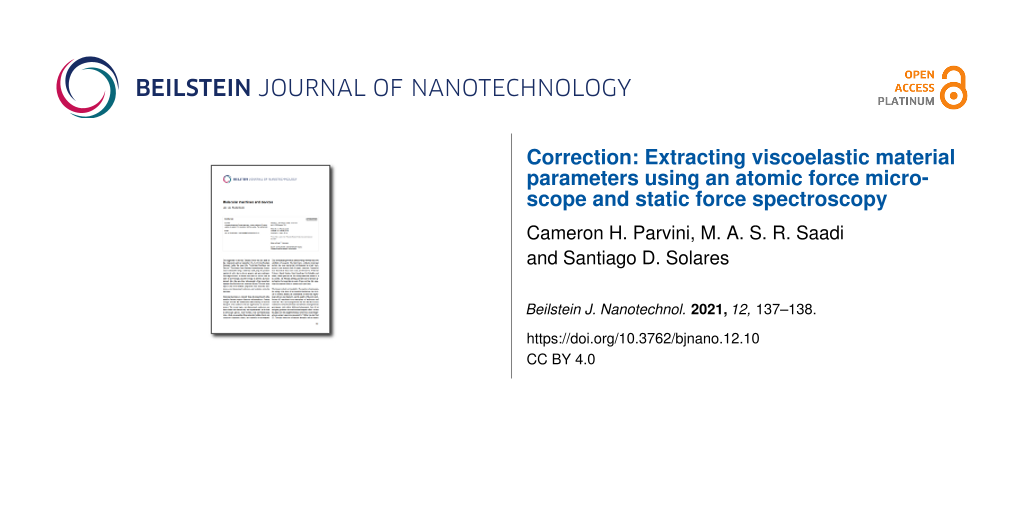In the “Useful Viscoelastic Quantities” section of the original publication, it is stated that the storage modulus (E′) and storage compliance (J′) are inverses of one another (Equation 10). Similarly, it is stated that the loss modulus (E″) and loss compliance (J″) are inverses of one another (Equation 11). However, it is the relaxance (Q) and retardance (U) that are inverses of one another in the Laplace domain (not in the time domain), leading to a more complex relationship between the moduli and their respective compliances. Translation between harmonic quantities can be accomplished through the expressions below, where is the absolute modulus and
is the absolute compliance [1]:
Absolute modulus and absolute compliance are calculated as:
The leftmost term in Equation 10 and Equation 11 in the original manuscript is thus incorrect and needs to be removed, leaving the following corrected expressions:
Equation 10:
Equation 11:
Reference
-
Tschoegl, N. W. The Phenomenological Theory of Linear Viscoelastic Behavior; Springer: Berlin Heidelberg, Germany, 1989. doi:10.1007/978-3-642-73602-5
Return to citation in text: [1]
| 1. | Tschoegl, N. W. The Phenomenological Theory of Linear Viscoelastic Behavior; Springer: Berlin Heidelberg, Germany, 1989. doi:10.1007/978-3-642-73602-5 |
© 2021 Parvini et al.; licensee Beilstein-Institut.
This is an Open Access article under the terms of the Creative Commons Attribution License (https://creativecommons.org/licenses/by/4.0). Please note that the reuse, redistribution and reproduction in particular requires that the author(s) and source are credited and that individual graphics may be subject to special legal provisions.
The license is subject to the Beilstein Journal of Nanotechnology terms and conditions: (https://www.beilstein-journals.org/bjnano/terms)









